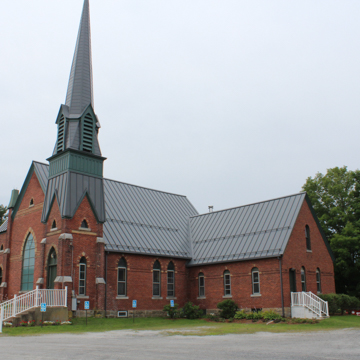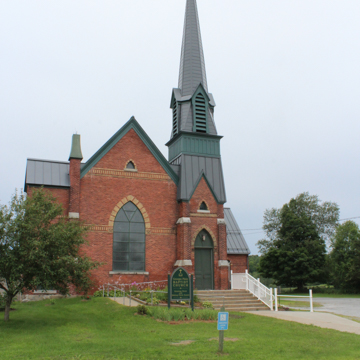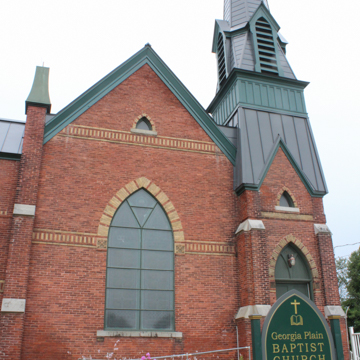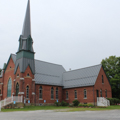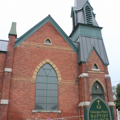It is surprising to find a polychrome High Victorian Gothic church among the Greek Revival houses at this quiet rural crossroads, but this building marks a site claimed by Georgia's Baptists since 1848. Organized in 1793, the congregation met in the town house on the green in Georgia Center until deciding to build a brick meetinghouse at this strategic crossroads of agricultural and milling activities. When the first building burned in 1876, the congregation promptly rebuilt in the latest fashion. If similarities to other churches by George Guernsey in St. Johnsbury (Methodist, burned), Barton (Methodist, fire damaged), Bellows Falls, and East Orange are any indication, the commission was awarded to the prolific Montpelier architect. The red brick structure has a high, gabled facade with a large stained glass window separated by buttresses from a two-story vestry to the left and an entrance tower to the right. The latter begins to taper with a slated mansard at the second-floor level that serves as a base for a steep octagonal spire with belfry gablets. The architect made striking use of tan and red brick for the walls and details, and of red and gray slate for the roofs. This Ruskinian colorism stands out against the nearby burial ground and farm fields as a reminder of the spread of urban sophistication throughout Vermont, even to towns like Georgia with no sizable villages.
You are here
Georgia Plain Baptist Church
If SAH Archipedia has been useful to you, please consider supporting it.
SAH Archipedia tells the story of the United States through its buildings, landscapes, and cities. This freely available resource empowers the public with authoritative knowledge that deepens their understanding and appreciation of the built environment. But the Society of Architectural Historians, which created SAH Archipedia with University of Virginia Press, needs your support to maintain the high-caliber research, writing, photography, cartography, editing, design, and programming that make SAH Archipedia a trusted online resource available to all who value the history of place, heritage tourism, and learning.







